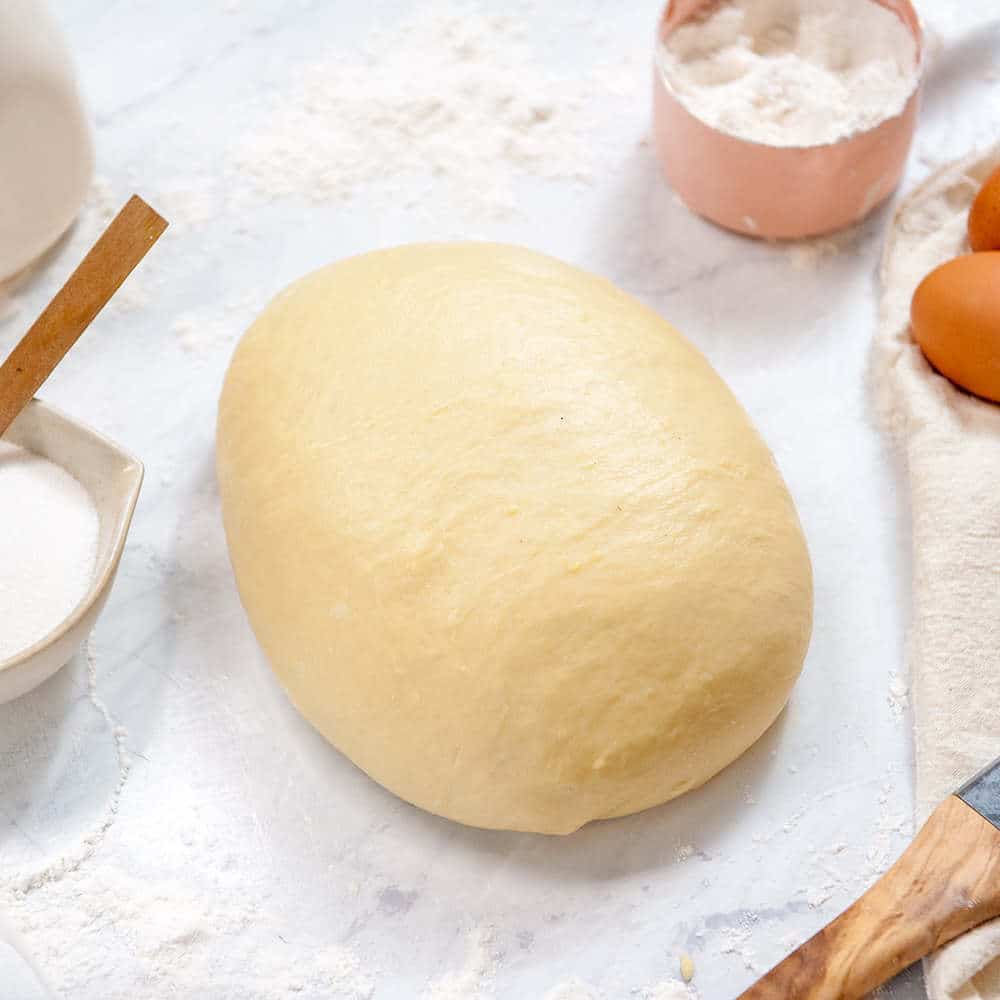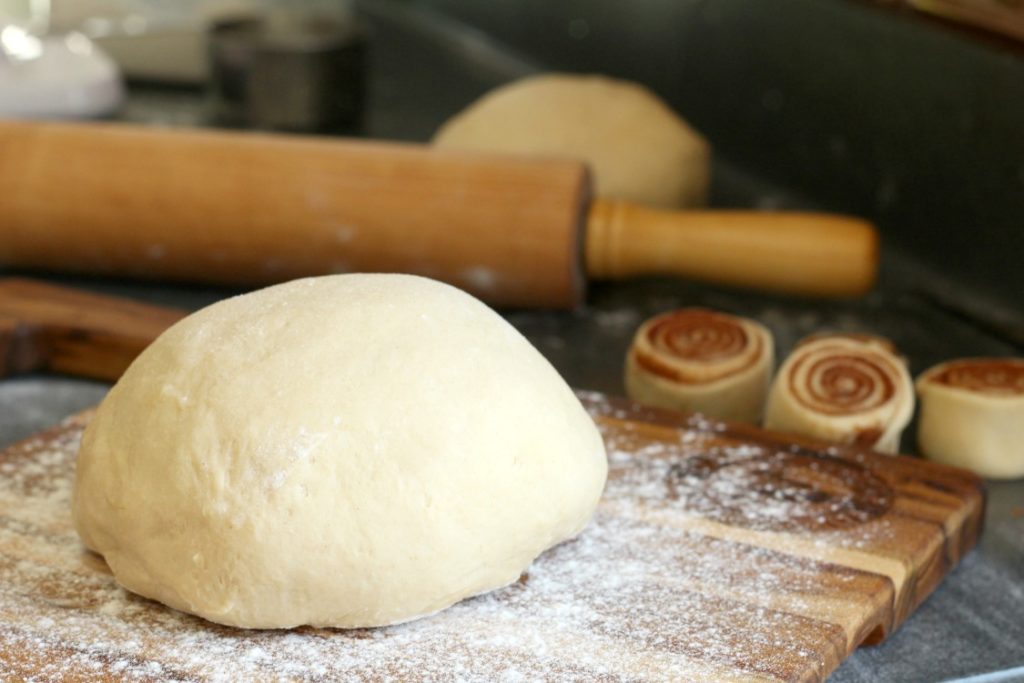Step into the realm of baking magic with our comprehensive guide to sweet dough recipes. From the essential ingredients that form the foundation of this versatile dough to the techniques that transform it into culinary masterpieces, we’ll explore the intricacies of creating sweet dough that will tantalize your taste buds and impress your loved ones.
Whether you’re a seasoned baker or a novice eager to expand your repertoire, this guide will provide you with the knowledge and inspiration to craft exceptional sweet doughs. Let’s delve into the world of sweet dough and discover the secrets to creating pastries that will leave a lasting impression.
Ingredients
Sweet doughs are made with a variety of ingredients, each of which plays a specific role in creating the dough’s texture and flavor.
The most important ingredients in a sweet dough are:
- Flour: Flour is the main ingredient in sweet dough, and it provides the structure for the dough. The type of flour used will affect the texture of the dough, with bread flour producing a chewier dough and cake flour producing a more tender dough.
- Sugar: Sugar is added to sweet dough to provide sweetness and flavor. The amount of sugar used will affect the sweetness of the dough, and it can also affect the texture, with more sugar producing a softer dough.
- Yeast: Yeast is a fungus that helps the dough to rise. The amount of yeast used will affect the speed at which the dough rises, and it can also affect the flavor of the dough, with more yeast producing a more yeasty flavor.
- Milk: Milk is added to sweet dough to provide moisture and richness. The type of milk used will affect the flavor of the dough, with whole milk producing a richer flavor than skim milk.
- Butter: Butter is added to sweet dough to provide flavor and richness. The amount of butter used will affect the flavor of the dough, and it can also affect the texture, with more butter producing a more tender dough.
- Eggs: Eggs are added to sweet dough to provide structure and richness. The number of eggs used will affect the texture of the dough, with more eggs producing a more tender dough.
Methods

Making sweet dough involves a series of crucial steps that require proper execution to achieve the desired texture and flavor. These steps include mixing, kneading, and proofing, each playing a vital role in the dough’s development.
Mixing the ingredients thoroughly ensures even distribution of all components. The order of addition is essential, as liquids are typically added to dry ingredients gradually to prevent clumping. Yeast, a key ingredient in sweet dough, is usually dissolved in warm water before being incorporated into the mixture to activate its fermenting properties.
Kneading
Kneading is a fundamental step that develops the dough’s gluten structure. Gluten is a protein network that provides elasticity and strength to the dough, allowing it to trap gases during proofing and rise during baking. Proper kneading involves folding and stretching the dough repeatedly, either by hand or using a dough hook attachment on a stand mixer.
The kneading process aligns the gluten strands, creating a strong and cohesive network.
The duration of kneading depends on the specific recipe and the type of flour used. Over-kneading can toughen the dough, while under-kneading can result in a weak and dense crumb. As a general rule, kneading should continue until the dough becomes smooth, elastic, and no longer sticky to the touch.
Proofing
Proofing is the process of allowing the dough to rest and rise. During this stage, the yeast ferments the sugars in the dough, producing carbon dioxide gas. This gas creates small pockets within the dough, resulting in the characteristic airy texture of sweet dough.
Proofing is typically done in a warm and humid environment, such as a covered bowl placed in a warm oven or a proofing box.
The duration of proofing varies depending on the temperature and the amount of yeast used. It is important to allow the dough to rise until it has doubled in size, as under-proofing can result in a dense loaf, while over-proofing can cause the dough to collapse during baking.
Variations
The basic sweet dough recipe can be customized to create a variety of different flavors and textures. By incorporating different ingredients, such as chocolate, cinnamon, or fruit, you can create unique and delicious pastries.
The kneading technique also plays a role in the final texture of the dough. A longer kneading time will result in a tougher dough, while a shorter kneading time will produce a more tender dough.
Chocolate Sweet Dough
- Add 1/2 cup of cocoa powder to the dry ingredients.
- Add 1/2 cup of chocolate chips to the wet ingredients.
Cinnamon Sweet Dough
- Add 1 tablespoon of ground cinnamon to the dry ingredients.
- Add 1/2 cup of chopped walnuts to the wet ingredients.
Fruit Sweet Dough
- Add 1 cup of chopped fruit (such as blueberries, strawberries, or raspberries) to the wet ingredients.
- Reduce the amount of sugar in the recipe by 1/4 cup.
Troubleshooting
Encountering problems while crafting sweet dough is not uncommon. Understanding the potential pitfalls and their remedies will equip you to troubleshoot effectively, ensuring a successful baking experience.
The precision of ingredient measurements and adherence to techniques are crucial in avoiding common issues. Let’s delve into specific problems and their solutions:
Dough Too Sticky
- Cause: Excessive moisture from over-mixing or adding too much liquid.
- Solution: Gradually add flour 1 tablespoon at a time until the dough reaches the desired consistency.
Dough Too Dry
- Cause: Insufficient moisture due to not adding enough liquid or over-measuring flour.
- Solution: Gradually add water 1 tablespoon at a time until the dough becomes pliable and elastic.
Dough Not Rising
- Cause: Inactive yeast or insufficient proofing time.
- Solution: Check the yeast’s expiration date and ensure it is active by proofing it in warm water before using. Allow adequate time for the dough to rise in a warm environment.
Dough Dense and Heavy
- Cause: Over-kneading or using too much flour.
- Solution: Knead the dough just until it comes together and avoid adding excessive flour.
Applications
Sweet dough, with its inherent sweetness and versatility, finds its way into a diverse range of baking applications. Its unique texture and flavor profile make it suitable for a wide array of pastries, breads, and desserts.
The malleability of sweet dough allows for various shaping techniques, each imparting a distinct character to the final product. Braiding, rolling, and molding are just a few examples of these techniques, contributing to the visual appeal and textural complexity of sweet dough creations.
Pastries
In the realm of pastries, sweet dough shines in the form of croissants, Danish pastries, and cinnamon rolls. The flaky layers of croissants, the buttery richness of Danish pastries, and the indulgent swirls of cinnamon rolls are all testaments to the versatility of sweet dough in creating delectable pastries.
Breads
Sweet dough also finds its place in the world of breads, offering a delightful departure from traditional savory options. Sweet bread loaves, enriched with fruits, nuts, or chocolate chips, provide a comforting and flavorful treat. Braided challah bread, with its intricate design, adds a touch of elegance to any occasion.
Desserts
The realm of desserts is where sweet dough truly excels. From classic fruit tarts to intricate pastries, the possibilities are endless. The delicate crust of fruit tarts, filled with fresh fruit and a layer of sweet custard, provides a delightful balance of flavors and textures.
Sweet dough also forms the base for intricate pastries like éclairs and profiteroles, filled with delectable creams and topped with rich chocolate ganache.
Last Point

As we conclude our exploration of sweet dough recipes, remember that the art of baking is a journey of experimentation and creativity. Don’t be afraid to experiment with different flavors, techniques, and shaping methods to create your own unique sweet dough masterpieces.
With practice and passion, you’ll master the techniques and create delectable pastries that will bring joy to every occasion.
FAQ Section
What is the secret to achieving a perfectly kneaded sweet dough?
The key to perfect kneading lies in developing the gluten network without overworking the dough. Knead until the dough becomes smooth and elastic, but avoid excessive kneading, which can result in a tough dough.
How can I incorporate different flavors into my sweet dough?
Experiment with adding spices like cinnamon or nutmeg, extracts like vanilla or almond, or even fresh fruits like berries or citrus zest to infuse your dough with unique flavors.
What are some common troubleshooting tips for sweet dough?
If your dough is too dry, add a splash of milk or water. If it’s too wet, add a bit more flour. If your dough doesn’t rise properly, ensure the yeast is active and the dough has been proofed in a warm environment.
